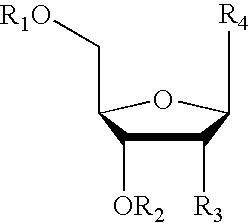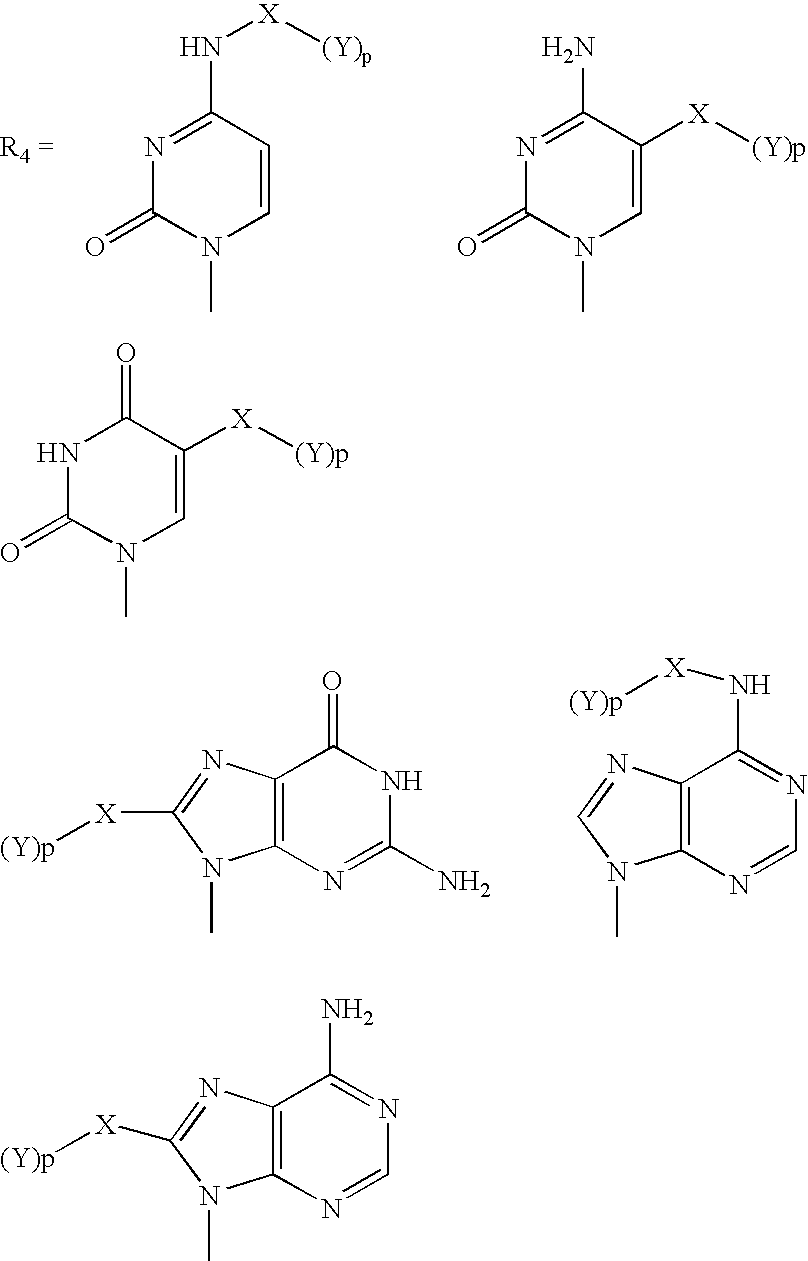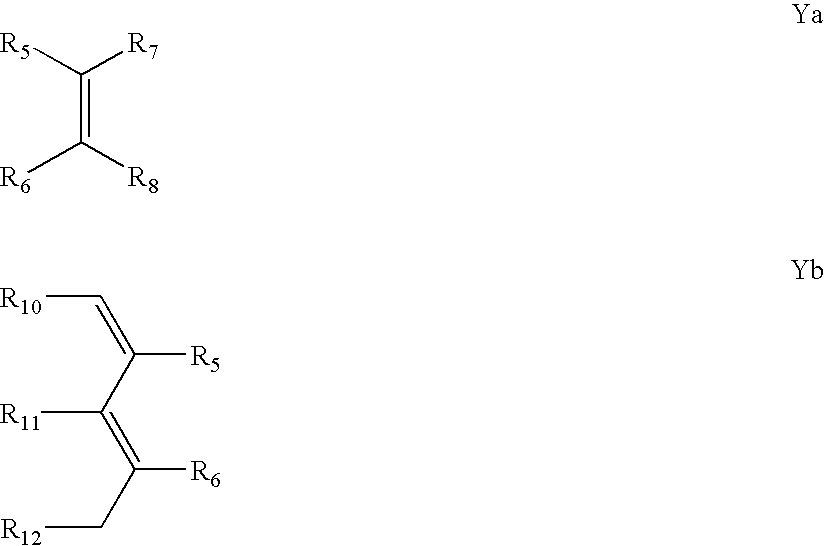Methods and compositions for enhancing detection in determinations employing cleavable electrophoretic tag reagents
a technology of electrophoretic tag and composition, which is applied in the field of methods and compositions for enhancing detection in determinations employing cleavable electrophoretic tag reagents, can solve the problems of high cost of arrays, confounding the accuracy of genetic information, and high cost of synthesizing arrays
- Summary
- Abstract
- Description
- Claims
- Application Information
AI Technical Summary
Benefits of technology
Problems solved by technology
Method used
Image
Examples
example 1
Singleplex Amplifications of Allele 1 and Allele 2
[0421] The experiment was set up to run in the following fashion (6 samples, a triplicate for Allele1 and another triplicate for Allele-2):
[0422] 22 .mu.L of Mastermix
[0423] 13 .mu.L of probes and primers (both the probes are present)
[0424] 4.0 .mu.L of Allele-1 or Allele-2
[0425] 11 .mu.L of buffer (10 mM Tris-HCl, 1 mM EDTA, pH8.0)
[0426] Allele 1 was labeled with tetrachloro fluorescein (TET), and Allele 2 was labeled with fluorescein (FAM), each having characteristics as set forth in FIG. 1B.
[0427] The above volumes were added to a PCR tubes and the reaction mixtures were cycled on a Gene Amp.RTM. system 9600 thermal cycler (Perkin Elmer) as follows:
[0428] 50.degree. C.; 2 MIN (for optimal AmpErase UNG activity)
[0429] 96.degree. C.; 10 MIN (required to activate AmpliTaq Gold DNA Polymerase)
[0430] 40 cycles of:
[0431] 95.degree. C.; 15 SEC
[0432] 60.degree. C.; 60 SEC
[0433] 70.degree. C.; 10 MIN
[0434] 4.degree. C.; storage
[0435] Resul...
example 2
A Multiplexed Reaction With Both Allele 1 and Allele 2 Present in Equal Ratio
[0437] The experiment was set up in the following fashion (3 reaction tubes, a triplicate):
[0438] 22 .mu.L of Mastermix
[0439] 13 .mu.L of probes and primers (both of the probes were present)
[0440] 4.0 .mu.L of Allele-1
[0441] 4.0 .mu.L of Allele-2
[0442] 7 .mu.L of buffer (10 mM Tris-HCl, 1 mM EDTA, pH 8.0)
[0443] The above volumes were added to a PCR tubes and the reaction mixtures were cycled on a Gene Amp.RTM. system 9600 thermal cycler (Perkin Elmer) as follows:
[0444] 50.degree. C.; 2 MIN (for optimal AmpErase UNG activity)
[0445] 96.degree. C.; 10 MIN (required to activate AmpliTaq Gold DNA Polymerase)
[0446] 40 cycles of:
[0447] 95.degree. C.; 15 SEC
[0448] 60.degree. C.; 60 SEC
[0449] 70.degree. C.; 10 MIN
[0450] 4.degree. C.; storage
[0451] The results are shown in FIG. 20: CE separation of a 1:1 mixture of the 40 cycles products of Alleles 1 and 2. Experimental conditions were as given above for the experime...
example 4
Electroseparation of Label Conjugates on Microfluidic Chip
[0467] 1. Label conjugates comprising fluorescein linked to three different peptides, namely, KKAA (SEQ ID NO:5), KKKA (SEQ ID NO:6) and KKKK (SEQ ID NO:7) were prepared as follows: The protected tetrapeptide was prepared on resin using Merrifield reagents. The N-terminus of the last amino acid was reacted with fluorescein N-hydroxysuccinimide (Molecular Probes). The peptides were cleaved from the resin and purified by high performance liquid chromatography (HPLC).
[0468] The label conjugates, prepared as described above, and fluorescein were combined in an aqueous buffered solution and were separated and detected in an electrophoresis chip. Detection was 0.5 cm for the injection point on the anodal side of an electrophoresis channel. FITC-KKKK exhibited a negative charge and FITC-KKKA and FITC-KKKK exhibited a positive charge as determined by the migration time relative to EOF. The net charge of FITC-KKKK was greater than +1 ...
PUM
| Property | Measurement | Unit |
|---|---|---|
| charge/mass ratio | aaaaa | aaaaa |
| charge/mass ratio | aaaaa | aaaaa |
| pKa | aaaaa | aaaaa |
Abstract
Description
Claims
Application Information
 Login to View More
Login to View More - R&D
- Intellectual Property
- Life Sciences
- Materials
- Tech Scout
- Unparalleled Data Quality
- Higher Quality Content
- 60% Fewer Hallucinations
Browse by: Latest US Patents, China's latest patents, Technical Efficacy Thesaurus, Application Domain, Technology Topic, Popular Technical Reports.
© 2025 PatSnap. All rights reserved.Legal|Privacy policy|Modern Slavery Act Transparency Statement|Sitemap|About US| Contact US: help@patsnap.com



